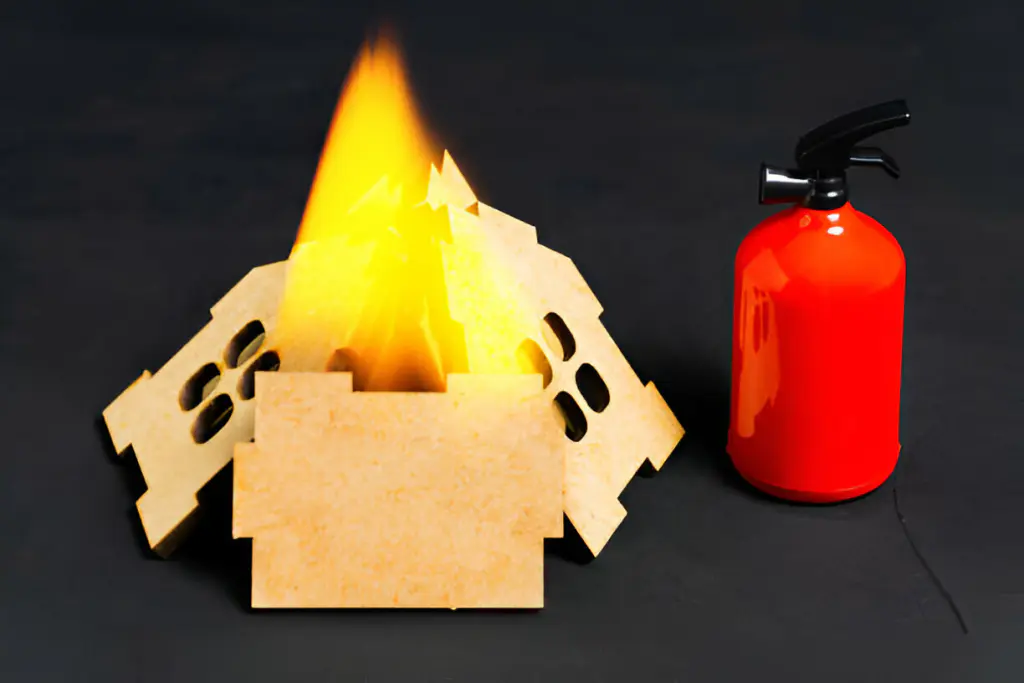Understanding fire hazards, implementing safety measures, and diligently following a robust fire safety plan are not only critical but also lifesaving. As a fire safety professional, I’ve seen firsthand the catastrophic consequences of neglecting these crucial steps.

But what if there was a way to significantly reduce the likelihood of such disasters? Come, let’s explore together the importance of comprehensive fire risk assessments and how they can be the key to preventing fire emergencies.
Importance of Fire Risk Assessment
Understanding the importance of a comprehensive fire risk assessment is the first crucial step towards ensuring a safer work environment. This process involves thorough hazard identification, with a keen focus on potential fire sources.
After identifying possible risks, risk evaluation is conducted to assess the likelihood and potential impact of the hazards. This evaluation informs the creation of targeted prevention strategies, aimed at mitigating the identified risks.
It’s not just about prevention though. Safety planning also involves the development of an emergency response plan, detailing the steps to take in the event of a fire. This ensures the swift evacuation of personnel and minimizes damage.
Identifying Common Fire Hazards
Recognizing common fire hazards in the workplace is a vital part of maintaining a safe environment and preventing potential fire incidents. A thorough hazard evaluation can identify risks such as faulty electrical equipment, improper storage of combustible materials, and blocked escape routes.

Regular inspections and maintenance can enhance safety measures, ensuring the effectiveness of fire extinguishers and alarm systems. Risk mitigation involves rectifying identified hazards promptly, reducing the likelihood of fire incidents. Prevention techniques include regular training on fire safety protocols and proper handling of combustible materials.
Effective Fire Prevention Strategies
After identifying potential fire hazards, the next step is to implement effective fire prevention strategies that promote safety and minimize risks in the workplace.
Regular fire drill simulations are crucial. They not only familiarize staff with evacuation protocols but also identify potential bottlenecks or issues in the evacuation process.
Additionally, fire extinguisher training must be made mandatory for all employees, ensuring they’re equipped to combat initial stages of a fire.
Electrical safety, too, is paramount and regular checks should be conducted to prevent any electrical fires.
At the same time, combustible storage must be handled with care, ensuring flammable materials are properly stored away from ignition sources.
Emergency Preparedness Essentials
Preparing for a fire emergency demands a comprehensive plan, robust communication protocols, and regular practice of evacuation procedures. A well-structured emergency response helps in swiftly tackling unexpected fire situations.
It’s crucial to establish clear communication protocols to ensure accurate and timely information dissemination during emergencies. Evacuation planning forms the backbone of any fire emergency plan. I can’t stress enough the importance of mapping out escape routes and planning evacuation strategies.
On-site fire extinguisher training equips individuals to combat a fire before it escalates. Frequent drill practices are also instrumental, as they reinforce escape procedures and help identify any logistical issues in the plan.
Role of Employees in Fire Safety
While emergency preparedness forms a solid foundation for fire safety, it’s the employees who play a pivotal role in maintaining this safety in their daily activities. Employee engagement in safety protocols, from fire drills participation to hazard reporting, is instrumental in preventing fire emergencies.
Fire drills aren’t just a formality but a critical part of emergency response training. They familiarize employees with evacuation routes, assembly points, and the use of fire safety equipment. Hazard reporting, too, isn’t to be overlooked. It’s the employees who interact with the workspace daily and are best equipped to identify potential fire risks, like faulty wiring or improperly stored flammable materials.
Thus, each employee is a vital link in the chain of fire safety, actively contributing to a safer work environment.
Legal Requirements for Fire Safety
Navigating the legal landscape of fire safety can seem daunting, but it’s crucial to understand that every establishment has a legal obligation to conduct a thorough fire risk assessment.
Understanding regulations is key in this process. These rules dictate the risk assessment process, ensuring safety protocols are adhered to and compliance standards met.
Legal obligations aren’t just about ticking boxes, though. They’re about safeguarding lives and property from the devastating impact of fires. It’s necessary to familiarize oneself with these requirements, to ensure full compliance.
Non-compliance can lead to serious legal consequences, but more importantly, it can put lives at risk. Always remember, fire safety is a legal requirement, but above all, it’s a moral one.
Employer’s Duties for Fire Safety
As an employer, it’s your responsibility to create a safe working environment by assessing and mitigating fire risks. Part of this includes conducting a thorough risk assessment. This process identifies potential fire hazards and evaluates the effectiveness of current safety measures.

It’s crucial to implement fire drill protocols and provide safety training to all employees. This ensures that they’re equipped with the knowledge to respond appropriately during a fire emergency. It’s also mandatory to ensure fire safety compliance, adhering to all applicable laws and regulations.
Lastly, establish an effective emergency response system. This includes clear evacuation routes and communication channels. Remember, fire safety isn’t just about prevention; it’s equally about preparedness.
Workplace Fire Prevention Measures
Implementing effective fire prevention measures in the workplace is a critical step towards ensuring the safety and well-being of all employees.
Regular fire drill simulations are invaluable tools, providing employees with practical experience in emergency response and workplace evacuation.
I can’t stress enough the importance of proper handling and storage of flammable materials, which significantly reduces the risk of a fire outbreak.
Ensuring electrical safety is another key measure, with regular checks and maintenance of electrical equipment being a must.
In case of an emergency, a well-designed response plan can make the difference between a controlled situation and a full-blown crisis.
Frequently Asked Questions
What Kind of Fire Safety Training Programs Are Available for Employees?
I’ve undergone several fire safety training programs including online training, evacuation drills, and workshops on equipment usage. These programs greatly emphasize emergency preparedness and the importance of maintaining a safe workplace.
Are There Specific Fire Safety Regulations for Different Industries or Types of Workplaces?
Yes, industry-specific regulations exist for various workplaces. They require a thorough workplace hazard analysis, adherence to equipment safety standards, and strict regulatory compliance, though enforcement can pose challenges in certain sectors.
How Often Should Fire Risk Assessments Be Conducted in a Workplace?
I’d recommend conducting fire risk assessments annually. However, reassessments should be done when alterations occur, enhancing safety precautions. Frequent risk evaluations ensure updated emergency protocols and the necessity of proper documentation.
How Can We Involve and Educate Visitors or Clients About Our Workplace Fire Safety Measures?
I’d recommend creating safety brochures and fire safety posters, conducting visitors’ orientation and client briefings, and involving guests in emergency drills. This way, everyone’s informed and prepared, significantly reducing fire-related risks.
What Are Some Additional Resources to Stay Updated About Latest Fire Safety Standards and Regulations?
I constantly stay updated on fire safety standards and regulations through regulation updates, safety newsletters, online webinars, industry seminars, and participating in fire safety forums. It’s crucial to stay informed in this ever-evolving field.
Conclusion
In conclusion, fire risk assessments aren’t just a legal obligation, they’re a life-saving necessity. By identifying hazards, implementing prevention strategies, and preparing for emergencies, we can significantly reduce the risk of fire disasters.
It’s a team effort, requiring everyone to play their part in maintaining a safe environment. Remember, fire safety is a continuous process, not a one-time event. So, always stay vigilant, stay safe, and keep reassessing your fire risks.









